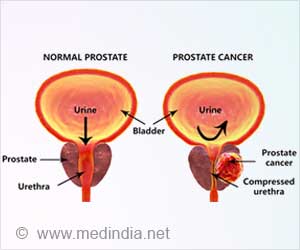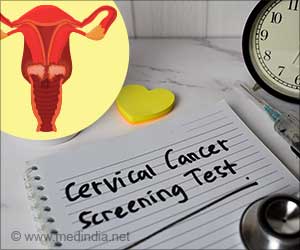- Violence against doctors is a grim reality in India
- It is influenced by many factors that have a direct or indirect impact on the problem
- Prevention is possible through multilateral cooperation between everyone concerned
Once-up-a-time, doctors were deeply revered and highly respected in society. They were idolized and treated as God. With the passage of time, the situation has changed dramatically and this type of deep respect for doctors is now extremely rare. Nowadays, doctors and other healthcare professionals are increasingly being subjected to violence at the workplace. Importantly, the situation in India is the worst in the world.
Read More..
Facts & Figures on the State of Healthcare in India
The information given below on the state of healthcare in India will help to understand the crux of the problem:- 1.6 million deaths occur in India due to poor quality of healthcare
- 8 percent to 38 percent of healthcare professionals suffer physical violence at some point in their careers
- In India, the highest rates of violence occur in the Obstetrics & Gynecology Department, followed by Medicine and Surgery Departments
- 75 percent of doctors in India have faced assault at the workplace
- 70 percent of doctors in India feel unsafe while treating a patient
What are the Forms of Violence against Doctors?
Although violence is perceived as only physical assault, there may be other forms too. These are highlighted below:- Telephonic threats
- Verbal abuse
- Intimidation
- Physical assault (non-injurious)
- Physical assault (causing severe injury)
- Murder
- Vandalism
- Arson
Is there a Gender Difference in Violence against Doctors?
There appears to be a gender difference in violence against doctors, with female doctors faring better than their male colleagues. For example, in USA the incidence rate of violence on female doctors is 34.2 percent. In China, male doctors suffer equally as female doctors, with reference to verbal abuse. But they suffer more physical (18.8% vs. 10.5%) and sexual (5.0% vs. 1.3%) assaults than their female counterparts.Recent Attacks on Doctors in India
There have been many instances of attacks on doctors in India of which some have been reported by the media, while others have gone unreported or hushed-up. The major attacks are briefly highlighted below:- August 2016 - B.J. Government Medical College, Pune: Two doctors, namely, Dr. Abhijit Jawanjal and Dr. Sadiq Yunus were attacked by miscreants
- March 2017 - Dhule Civil Hospital, Dhule, Maharashtra: Dr. Rohan Mhamorkar was brutally beaten-up, which resulted in loss of vision in one eye. Doctors across the country protested by wearing helmets to work
- May 2018 - Sion Hospital, Mumbai: Dr. Atish Parikh was beaten-up and Dr. S. Dharmadhikari was manhandled. There was a widespread outcry across Maharashtra in which resident doctors wore black ribbons as a sign of protest
The NRS Medical College Attack
The most recent violence took place at the Nil Ratan Sircar (NRS) Medical College in Kolkata on 12th June 2019, where two doctors were brutally attacked by a mob of 200 people following the death of a 75-year-old patient. The patient’s family alleged medical negligence as the cause of death.Of the two doctors who were attacked, Dr. Paribaha Mukhopadhyay sustained near-fatal head injuries, requiring a craniotomy. The protests by doctors spread like wildfire from Kolkata across the country and soon became a nationwide protest in which over 800,000 doctors went on strike. On 18th June 2019, after 7 days of protest, the junior doctors at NRS Medical College called off the strike after the Chief Minister, Mamata Banerjee gave her assurance that stern steps would be taken to counter violence against doctors in the future.
Violence against Doctors – A Global Pandemic?
The problem of violence against doctors is not just limited to India, but worldwide! Globally, on average, acts of violence have been reported to be mainly verbal and physical, occurring both in hospitals and community clinics. Besides India, some of the other countries with documented evidence of violence against doctors include China, Turkey, Nepal, Myanmar, Pakistan, Israel, USA, UK, Australia, and Germany.Major Factors Influencing Violence against Doctors in India
There are many factors, both direct and indirect, that influence the occurrence of violence in healthcare settings. Some of these are highlighted below:- Healthcare Budget: The budget for healthcare in the public sector is abysmal – merely 1.15–1.5 percent of the gross domestic product (GDP). As per World Bank data, the per capita expenditure on health in India is a meagre USD 60, compared to USD 300 in China or USD 1,000 in Brazil, not to mention the developed nations in Western Europe and North America, which spend much more
- Miscommunication: There is a lack of communication from doctors to patients, regarding the risks, costs, and complications of various medical procedures, especially those involving surgery
- Lack of Knowledge: Lack of health knowledge among patients and patient parties is a major factor that contributes to simmering anger against the health system, which erupts into violence especially when a patient dies. Most often, it is the doctors who have to bear the brunt of the violence
- Ignorance: Lack of awareness about preventive health measures often results in patients being brought to the hospital when it’s too late. If the patient dies in hospital, violence against doctors is inevitable
- Health Infrastructure: Poor health infrastructure is a major underlying cause. If the primary health centers (PHCs) and subsidiary health centers (SHCs), or even the district hospitals were adequately equipped with trained medical staff and instrumentation to cater to the rural population, then there would be much less pressure on medical colleges and hospitals in cities and metros
- Lack of Trust: There is a lack of trust in the health system in India. This stems from doctor-patient mistrust, which is increasing day-by-day. Moreover, doctors sometimes disregard patient and family concerns and apprehensions
- Misconduct by Doctors: Doctors have been known to abuse women patients during labor, which is termed as ‘obstetric violence’. This is an umbrella term that encompasses activities such as coercion, disrespectful behavior, discrimination, bullying and sexual abuse by doctors and other health staff during gynecological examination and delivery. This can lead to violence against doctors
- Doctor’s Errors & Mistakes: As they say “to err is human”; but for doctors, this may cost a life. Therefore, errors, especially during surgery can cause the death of a patient, often with dire consequences for the surgeon
- Overwork: Doctors in government hospitals are overworked to an inhuman extent. The Central Government directive to hospitals has fixed 12 hours as the maximum length of work at a stretch (in reality - 36 hours), 48 hours of work per week (in reality - 108 hours), and one weekly holiday (in reality - 2 per month)
- Societal Factors: Society is now more demanding and expectations of people are very high. There is also more aggression in society, sometimes referred to as ‘mobocracy’. These include violence on the roads, at public places, in schools and colleges, and now, in hospitals too!
- Demand & Supply Gap: In India, one government doctor serves 10,189 people, as opposed to WHO’s recommendation of one doctor for every thousand patients. This translates into a shortfall of 600,000 doctors. The nurse:patient ratio is equally dismal. Here, the ratio is 1:483, which means a shortage of two million nurses
Consequences of Violence on Doctors
Doctors and other health professionals who have been subjected to violence at the workplace have been reported to develop psychiatric conditions that often result in absenteeism from work. Some of these disorders are listed below:- Depression
- Fear and anxiety
- Post-traumatic stress disorder (PTSD)
- Insomnia
- Agoraphobia
The Way Forward
Some of the ways for averting violence in healthcare settings are briefly discussed below:- Health Policies & Legislations: Although 18 states in India have laws for violence against doctors, poor implementation, weak clauses, and inadequate knowledge of police, make these state-level Medicare Acts ineffective. Therefore, the Central Government is in the process of framing a new law along similar lines to bolster the states in the fight against violence on doctors
- Knowledge Dissipation: Knowledge about various diseases and other health issues should be dissipated through print media, TV, radio, social media, and health portals, which will enlighten patients and their families
- Strengthening Primary Healthcare: Primary health centers (PHCs) and subsidiary health centers (SHCs) in rural areas and their equivalents in urban areas, for example, Delhi’s Mohalla Clinics and Mumbai’s Swasth Clinics should be strengthened to reduce the load on tertiary care hospitals and improve doctor-patient relationships for greater patient satisfaction
- Awareness Generation: Doctors are instrumental in generating awareness among their patients. Spending a little more time with patients to explain different issues regarding treatment is very helpful for them
- Safe Workplace: A safe work environment and congenial atmosphere for doctors will help them tremendously to deliver quality healthcare to their patients
- Media Responsibility: The role of the media is instrumental in bringing health issues to the public eye. Therefore, the media should cover the positive news and achievements of the medical profession alongside the negative news and should desist from sensationalization of news
- Security & Monitoring: There is a need to deploy more guards in hospitals to maintain order and enforce restricted entry for those visitors who only have passes, in order to keep the size of the patient parties small. Installment of CCTVs for better monitoring should be made mandatory in all hospitals. Moreover, if violence occurs, the police should respond swiftly. Also, warnings about violence against doctors should be displayed in hospitals to deter miscreants
- Political Will: This will help to maintain law and order in hospitals and create a congenial environment so that the doctor-patient relationship remains on good terms. Moreover, the ‘VIP Culture’ prevalent in government hospitals should be stopped, as the kins of politicians often perpetrate acts of violence on doctors
- Strict Punishment: There should be strict convictions and fast track proceedings in courts of justice to punish the culprits. Also, violence against doctors should be regarded as a non-bailable offense. Interestingly, in Australia, the law is very strict about the punishment of miscreants for attacking health personnel, who receive a 14-year prison term
- Doctor’s Attitudes: The attitude of the doctors is crucial for their own safety. In case of difficult situations where violence can erupt, doctors should not respond to anger with anger. They should calmly address the grievances, but at the same time be prepared and call for back-up support
Conclusion
In conclusion, it may be said that doctors and patients need to develop a better understanding of each other in order to improve healthcare. Both doctors and patients have a role to play in avoiding unnecessary violence against doctors. So, on one hand, doctors should focus on curing, caring, and continuously communicating with patients and their families. On the other hand, patients should understand that medicine is not magic and a doctor is not God. Doctors, who are trying to defend patients’ lives, should not be forced into a situation in which they have to defend their own lives. So, let the fight be against diseases, not against doctors!Reference:
- Assaults upon medical men. JAMA. 1892; 18: 399-400.
- Violence against health workers - World Health Organization - (https://www.who.int/violence_injury_prevention/violence/workplace/en/)
- Zhu L, Li L, Lang J. Gender differences in workplace violence against physicians of obstetrics and gynecology in China: A questionnaire in the national congress. PLOS ONE. 2018; 13(12): e0208693. (https://doi.org/10.1371/journal.pone.0208693)
- Vaishya R, Maini L, Vaish A. Making the surgeons safe in India. Indian J Orthop. 2018; 52(2): 212-3.(http://www.ijoonline.com/text.asp?2018/52/2/212/226719)
- Kapoor MC. Violence against the medical profession. J Anaesthesiol Clin Pharmacol. 2017; 33(2): 145-7 - (http://www.joacp.org/text.asp?2017/33/2/145/209732)
- Ghosh K. Violence against doctors: A wake-up call. Indian J Med Res. 2018; 148(2): 130-3. - (https://www.ncbi.nlm.nih.gov/pmc/articles/PMC6206759/#ref1)
- Nagpal N. Incidents of violence against doctors in India: Can these be prevented? Natl Med J India. 2017; 30(2): 97-100.(http://www.nmji.in/text.asp?2017/30/2/97/212915)
- Reddy IR, Ukrani J, Indla V, Ukrani V. Violence against doctors: A viral epidemic? Indian J Psychiatry. 2019; 61(10): 782-5. - (http://www.indianjpsychiatry.org/text.asp?2019/61/10/782/255566)
- Goel R. Rising violence against doctors – where is our society heading? Delhi J Ophthalmol. 2017; 27: 240. - (https://www.djo.org.in/articles/27/4/editorial1204.html)
Source-Medindia











